Leucinodes
Name
Leucinodes Guenée, 1854
Type species: Leucinodes orbonalis Guenée, 1854
Synonyms:
- Hyperanalyta Strand, 1918
- Leuctinodes South, 1897 (misspelling)
Overview
Leucinodes currently includes twelve Old World species distributed in tropical to Mediterranean regions. The species share a white or light wing color and a calico pattern ranging from simple brown or dark fields to complex line patterns of light- to dark-brown color. A typical feature is the half moon-shaped spot on the forewing outer margin. Several of these species are misplaced in Leucinodes due to the superficial resemblance of wing color and pattern.
The genus has not been revised, and only a few species have been figured in the literature. Only L. orbonalis is of economical importance, causing up to 70% of eggplant crop losses in India. To face these losses, genetically modified Bt brinjal has been engineered and is currently under examination due to biosafety concerns.
The African populations comprise at least three cryptic sibling species. Their economical importance remains unclear at the moment. Specimens originating from from Africa should be determined as “Leucinodes sp.”
Many other species do not belong in the genus, leaving probably only three or four true Leucinodes species. Some species, such as L. apicalis Hampson and L. vagans (Tutt), may be transferred to other genus groups of Spilomelinae. Leucinodes unilinealis Snellen and another species are musotimines. In Leucinodes sensu stricto, the male genitalia have valvae that are short and compact and with a large sacculusSacculus:
The ventro-basal area of the valva.
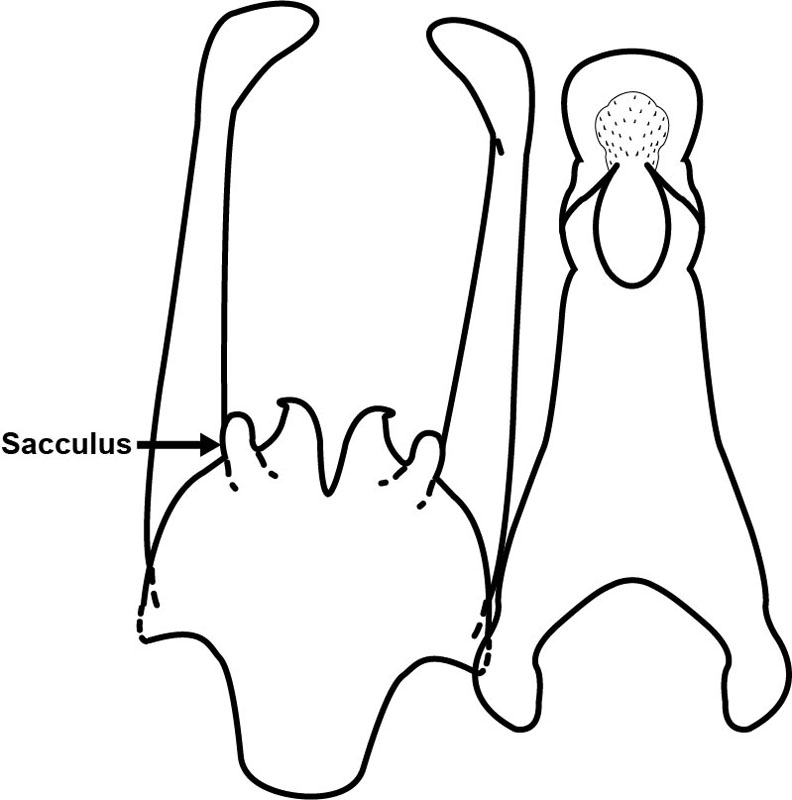 , the apical half tapering towards tip; usually one true horn-shaped fibulaFibula:
, the apical half tapering towards tip; usually one true horn-shaped fibulaFibula:
Any projection on the face of the valva (not including the saccular process, if any).
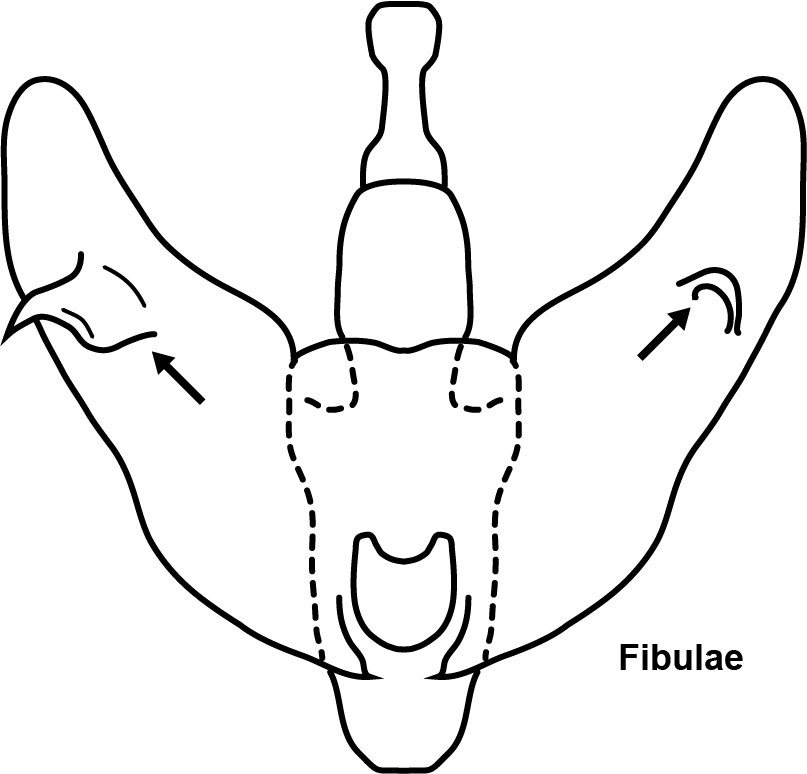 and a process emerging from the distal sacculusSacculus:
and a process emerging from the distal sacculusSacculus:
The ventro-basal area of the valva.
 . The uncusUncus:
. The uncusUncus:
The prominent projection from the dorsal tegumen of the male genitalia. May be variously shaped as a hook, knob, hood, etc.
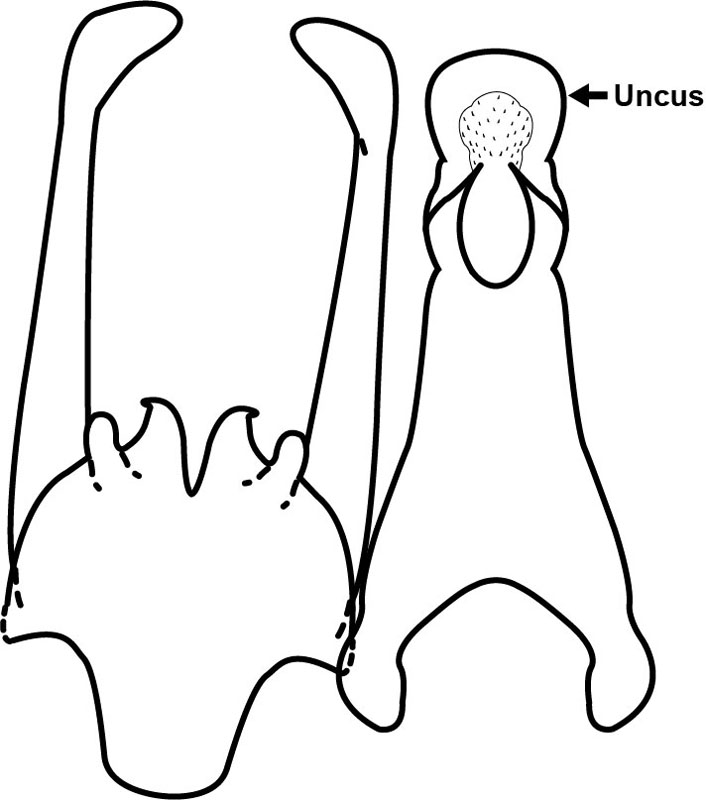 has a short neck, the head densely covered with setae. The juxtaJuxta:
has a short neck, the head densely covered with setae. The juxtaJuxta:
The sclerite ventral of the phallus, in the center of the male genitalic capsule.
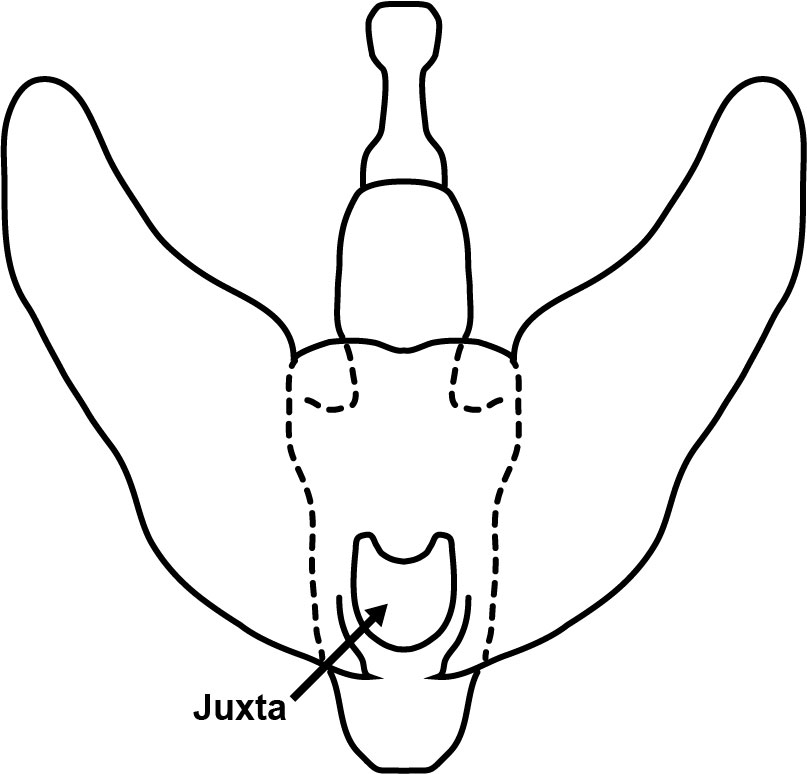 is elongated. The phallusPhallus:
is elongated. The phallusPhallus:
The intromittent part of the male genitalia, also known as the aedeagus.
 is short, with a sclerotized bar- or plate-like structure at the posterior end, without cornuti. The female genitalia are simple, with the corpus and ductus bursaeDuctus bursae:
is short, with a sclerotized bar- or plate-like structure at the posterior end, without cornuti. The female genitalia are simple, with the corpus and ductus bursaeDuctus bursae:
The usually narrow duct between the ostium and antrum and the corpus bursae.
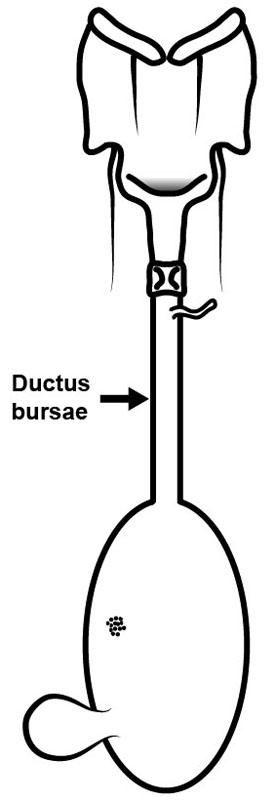 membranous and without a signumSignum:
membranous and without a signumSignum:
Any sclerite, sclerotized area, or discrete granular area on the wall of the corpus bursae (pl. signa).
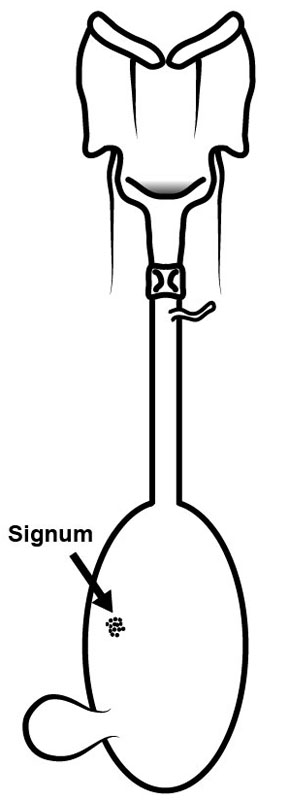 . Sclerotization of the antrumAntrum:
. Sclerotization of the antrumAntrum:
Posterior section of the ductus bursae, posterior of the colliculum.
 might be the only potentially diagnostic character in female genitalia.
might be the only potentially diagnostic character in female genitalia.

